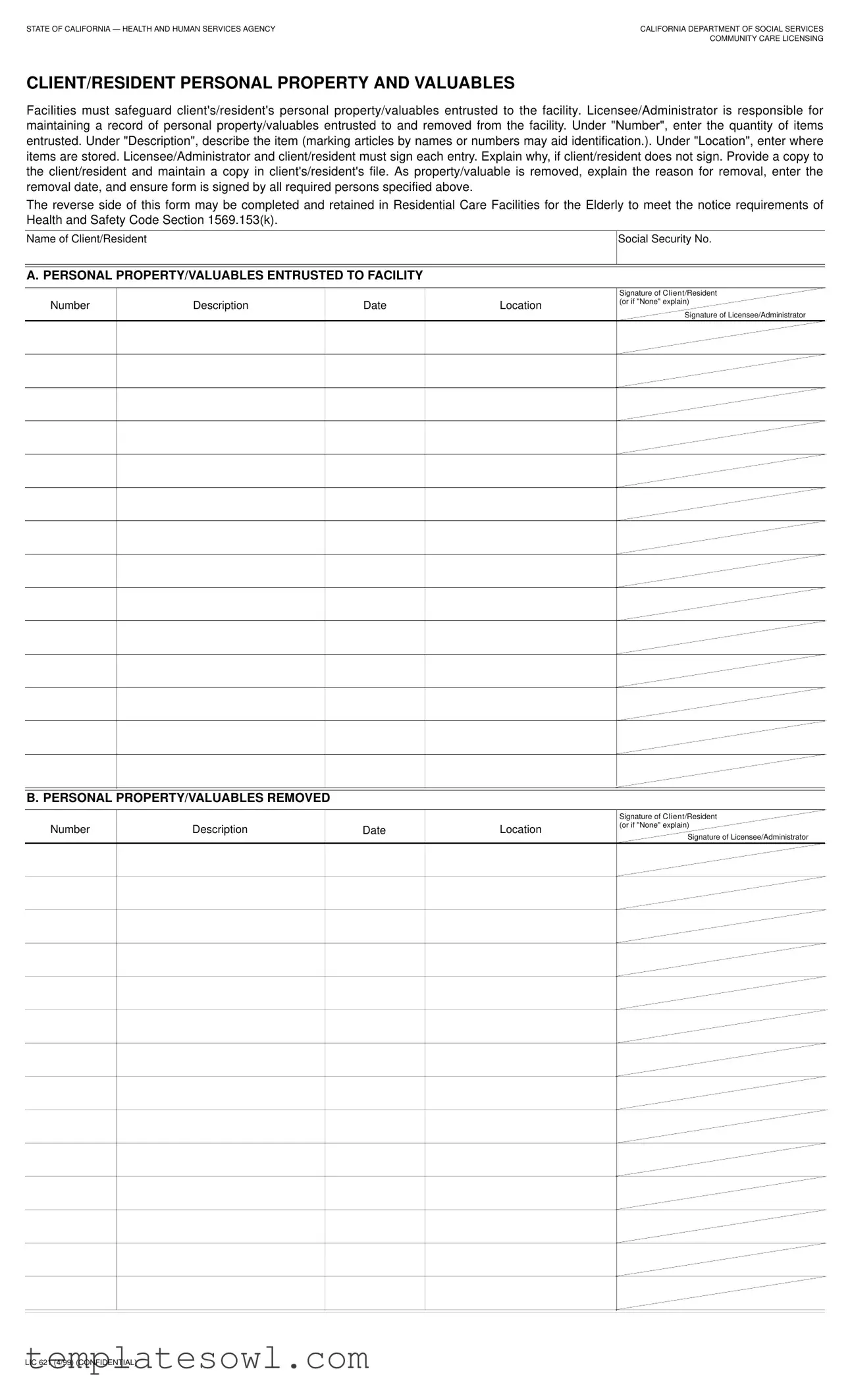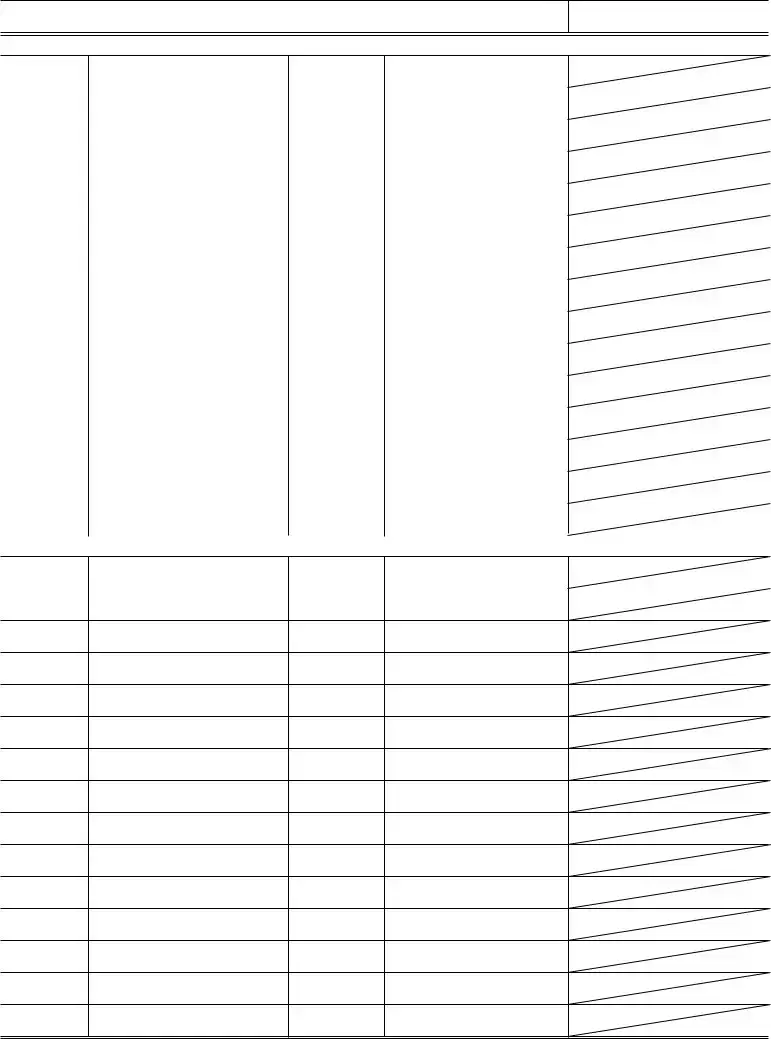RESIDENTIAL CARE FACILITIES FOR THE ELDERLY ONLY.
Section 1569.152 of the Health and Safety Code:
1569.152. (a) A residential care facility for the elderly, as defined in Section 1569.2, which fails to make reasonable efforts to safeguard resident property shall reimburse a resident for or replace stolen or lost resident property at its then current value. The facility shall be presumed to have made reasonable efforts to safeguard resident property if the facility has shown clear and convincing evidence of its efforts to meet each of the requirements specified in Section 1569.153. The presumption shall be a rebuttable presumption, and the resident or the resident's representative may pursue this matter in any court of competent jurisdiction.
(b)A civil penalty shall be levied if the residential care facility for the elderly has no program in place or if the facility has not shown clear and convincing evidence of its efforts to meet all of the requirements set forth in Section 1569.153. The State Department of Social Services shall issue a deficiency in the event that the manner in which the policies have been implemented is inadequate or the individual facility situation warrants additional theft and loss protections.
(c)The department shall not determine that a facility's program is inadequate based solely on the occasional occurrence of theft or loss in a facility.
SEC. 3. Section 1569.153 of the Health and Safety Code:
1569.153. A theft and loss program shall be implemented by the residential care facilities for the elderly within 90 days after January 1, 1989. The program shall include all of the following:
(a)Establishment and posting of the facility's policy regarding theft and investigative procedures.
(b)Orientation to the policies and procedures for all employees within 90 days of employment.
(c)Documentation of lost and stolen resident property with a value of twenty-five dollars ($25) or more within 72 hours of the discovery of the loss or theft and, upon request, the documented theft and loss record for the past 12 months shall be made available to the State Department of Social Services, law enforcement agencies and to the office of the State Long-Term Care Ombudsman in response to a specific complaint. The documentation shall include, but not be limited to, the following:
(1)A description of the article.
(2)Its estimated value.
(3)The date and time the theft or loss was discovered.
(4)If determinable, the date and time the loss or theft occurred.
(5)The action taken.
(d)A written resident personal property inventory is established upon admission and retained during the resident's stay in the residential care facility for the elderly. Inventories shall be written in ink, witnessed by the facility and the resident or resident's representative, and dated. A copy of the written inventory shall be provided to the resident or the person acting on the resident's behalf. All additions to an inventory shall be made in ink, and shall be witnessed by the facility and the resident or resident's representative, and dated. Subsequent items brought into or removed from the facility shall be added to or deleted from the personal property inventory by the facility at the written request of the resident, the resident's family, a responsible party, or a person acting on behalf of a resident. The facility shall not be liable for items which have not been requested to be included in the inventory or for items which have been deleted from the inventory. A copy of a current inventory shall be made available upon request to the resident, responsible party, or other authorized representative. The resident, resident's family, or a responsible party may list those items which are not subject to addition or deletion from the inventory such as personal clothing or laundry, which are subject to frequent removal from the facility.
(e)Inventory and surrender of the resident's personal effects and valuables upon discharge to the resident or authorized representative in exchange for a signed receipt.
(f)Inventory and surrender of personal effects and valuables following the death of a resident to the authorized representative in exchange for a signed receipt. Immediate written notice to the public administrator of the county upon the death of a resident whose heirs are unable or unwilling to claim the property as specified in Chapter 20 (commencing with Section 1140) of Division 3 of the Probate Code.
(g)Documentation, at least semiannually, of the facility's efforts to control theft and loss, including the review of theft and loss documentation and investigative procedures and results of the investigation by the administrator and, when feasible, the resident council.
(h)Establishment of a method of marking, to the extent feasible, personal property items for identification purposes upon admission and, as added to the property inventory list, including engraving of dentures and tagging of other prosthetic devices.
(i)Reports to the local law enforcement agency within 36 hours when the administrator of the facility has reason to believe resident property with a then current value of one hundred dollars ($100) or more has been stolen. Copies of those reports for the preceding 12 months shall be made available to the State Department of Social Services and law enforcement agencies.
(j)Maintenance of a secured area for residents' property which is available for safekeeping of resident property upon the request of the resident or the resident's responsible party. Provide a lock for the resident's bedside drawer or cabinet upon request of and at the expense of the resident, the resident's family, or authorized representative. The facility administrator shall have access to the locked areas upon request.
(k)A copy of this section and Sections 1569.152, 1569.153 and 1569.154 is provided by a facility to all of the residents and their responsible parties, and available upon request, to all of the facility's prospective residents and their responsible parties.
(l)Notification to all current residents and all new residents, upon admission, of the facility's policies and procedures relating to the facility's theft and loss prevention program.
(m)Only those residential units in which there are no unrelated residents and where the unit can be secured by the resident or residents are exempt from the requirements of this section.
Section 1569.154 of the Health and Safety Code:
1569.154. No provision of a contract of admission, which includes all documents which a resident or his or her representative is required to sign at the time of, or as a condition of, admission to a residential care facility for the elderly, shall require or imply a lesser standard of responsibility for the personal property of residents than is required by law.
I have received a copy of Health and Safety Code Sections: 1569.152, 1569.153, and 1569.154 and am acquainted with the facilities personal property safeguard procedures.


